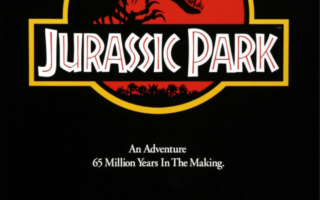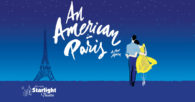Starlight Theater
Kansas City, Missouri
July 11, 2017
It’s one of the most beloved film musicals of all time, winner of six Academy Awards, including Best Picture, and was often referred to by its star, the great Gene Kelly, as his favorite of his films. I’m talking, of course, about 1951’s “An American in Paris,” which introduced a new generation to the music of George and Ira Gershwin.
Paris. World War II has just ended and American G.I. Jerry Mulligan (McGee Maddox), an aspiring painter, has decided to stay in the City of Lights in hopes of gaining new inspirations to put brush to canvas. He meets fellow soldier Adam (Etai Benson), who delivers the story to the audience. He also meets Henri (Nick Spangler), an aspiring performer. The three men are anxious to remove all memories of the war and begin whatever great adventure life has planned for them. Things go well until they meet the beautiful Lise (Sara Esty), a young ballet dancer. While Adam’s relationship with LIse is professional, both Jerry and Henri fall in love with her, with complications aplenty.
First off my sincere thanks for the marvelous performance turned in by the entire cast on a night where, as the curtain rose, the temperature was near 90 degrees. Thankfully there was a nice breeze all night because the night went by swiftly. Director/choreographer Christopher Wheeldon has embraced the ballet aspect of the story, with much of the on-stage movement based on that form of dance. The graceful movements of those involved were perfect accompaniments with the musical score. No wonder Mr. Wheeldon was nominated for the Tony Award for both his directing and choreography, winning the award for the latter.
The four leads were in fine voice, breathing fresh life into such well known standards as “I Got Rhythm,” “The Man I Love” and “‘S Wonderful.” The costumes were bright and colorful and the set design, though a little dark, evoked Paris in the late 1940’s.
Again, the video screens were a little distracting but I will give Starlight credit for using mostly wide-shots of the stage (“Mamma Mia” utilized a lot of close-ups, meaning those watching on the screens were missing a lot of the dancing), giving the audience a complete view of the award-winning choreography.


